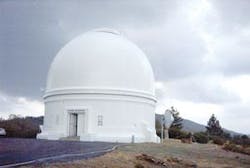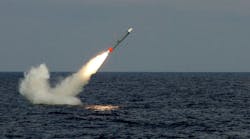By Courtney E. Howard
WASHINGTON—The National Aeronautics and Space Administration (NASA) in Washington has upgraded its data handling and communications systems with some of the latest technology innovations, including voice-over-IP (VoIP).
Engineers at Quintron Systems Inc. in Santa Maria, Calif., have updated the communications equipment at the NASA Marshall Space Center (MSFC) in Huntsville, Ala.
The system supports remote voice connections among researchers and scientists via the Internet, enabling them to discuss their projects with various NASA personnel, including astronauts on the International Space Station.
Quintron Systems personnel developed the mission voice system, based on the company’s existing DICES VoIP system, to meet MSFC requirements. NASA officials required direct client connection to the MSFC central password-authentication system, encryption for all system connections to maintain security for voice traffic, and an operator control window for the critical communications link to the Space Station.
“The entire central system is made of servers, replacing larger and more complex equipment typically used for such communication systems,” says a company representative. Remote users need only download a small software client onto their computers, and then connect to the central server at MSFC via the Internet. The T1 Gateway, another type of server, facilitates remote connections to radios, telephones, or the satellite links to the Space Station.
MSFC officials switched to the DICES VoIP system in May 2008, and have logged mission support daily since that time. “Voice quality and system responsiveness have been judged exceptional, such that further expansion for MSFC is being considered as a cost-alternative to other upgrade options,” says a representative.
In other NASA news, officials at the Infrared Processing and Analysis Center (IPAC), a NASA facility based at the California Institute of Technology, is upgrading its enterprise network architecture. The upgrade is necessary to process and store massive amounts of spectroscopy and imaging data being generated by the Palomar Transient Factory (PTF), a four-year project that scans the skies nightly to capture any undiscovered objects.
“IPAC, a multimission center of expertise for long-wavelength astrophysics, serves to carry out data-intensive processing tasks of vital importance to NASA’s infrared and sub-millimeter astronomy programs by developing and maintaining systems, access/analysis tools, and data archiving,” describes an official.
Researchers anticipate that IPAC will process and extract images of as many as 30 million objects captured each night, and as many as 42 billion records over the life of the Palomar Transient Factory project. To do so, IPAC personnel require high-speed disk storage capable of not only meeting the extremely data-intensive demands and large-scale data growth of the project, but also processing and delivering viewable images to researchers by the following day.
IPAC officials sought advances in storage technology, including multi-node storage capabilities, to help them better manage the PTF data throughout its lifecycle. They partnered with Seanodes, the Boston-based provider of a high-performance storage platform offering catastrophic fault tolerance and ease of use.
“Data storage and analysis is the lifeblood of organizations such as IPAC,” says Jacques Baldinger, chief executive officer of Seanodes. “Traditional storage solutions impose limiting factors that prevent organizations from maximizing their compute infrastructures. These limitations negatively influence performance, manageability, reliability, and costs.”
Exanodes enables data-intensive organizations to leverage available space across existing multinode server environments, and to use standard, commercial off-the-shelf storage hardware to gain ground-breaking benefits. IPAC personnel are in the process of building out a multinode Exanodes clustered solution from Seanodes for the PTF project.
“Seanodes is the most promising storage technology I’ve come across in years,” says Eugean Hacopians, senior systems engineer at IPAC. “I’ve found it to be a simple-to-deploy-and-manage architecture that is robust, resilient, and cost effective. To me, it represents the foundation of an era of storage architecture—one in which storage systems exist independent of physical hardware and are much faster, much more flexible, and utterly fault tolerant. We are excited about the independence and performance that the Seanodes approach will provide in deploying future upgrades and expanded data storage requirements.”
For more, visit Quintron Systems Inc. and Seanodes online at www.quintron.com and www.seanodes.com, respectively.



